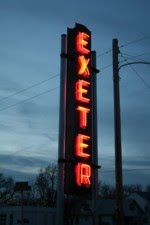Why Take Math? Many future jobs require strong math skills
Strong math skills will help you get a job, many of them
high-paying, in the future. In the list of fastest growing
occupations from the U.S. Department of Labor, math-related
jobs include:
. physician assistants;
. computer software engineers, systems administrators,
and database administrators;
. physical therapists;
. veterinary technologists and technicians;
. medical scientists;
. medical technologists; and
. biomedical and environmental engineers.
As technology advances, it usually leads to new uses
of math in the workplace, requiring more workers to have
strong math skills. As you can see from the list above, many
of these jobs also require knowledge in related scientific
disciplines, such as computer science or medicine.
According to the Department of Labor, the most common fields
for mathematicians to find work in are computer science and
software development, physics, engineering, and operations
research. More are also getting jobs in financial analysis
for businesses.
Even if you select a career in which math is not
required to do a lot of your daily work, you'll still need
math skills. For example, news reporters need to understand
statistics to report on many stories. And if you choose a
career that doesn't require a four-year college degree,
such as carpenter or electrician, you will need math skills
for those jobs as well. So keep taking those math
courses. Even if you don't think you'll need it in your
job, you'll need it to get through life.
Try to think of careers that involve science, math or
technology. Do you realize that more than 60 percent of all
jobs today require some form of technical skills? The need
for workers with science, math, and technology skills is
going to expand during your lifetime. And the need for these
skills won't necessarily be confined to jobs in science,
math or technology fields.
You can start getting ready for job opportunities by
taking challenging courses in math and science and learning
computer skills. Everyone has the ability to learn. If you
think that you aren't "a natural" at math, get the
help you need to understand it. The more you work with any
subject, the more you learn and the more confident you
become. ACT recommends that students take a minimum of
three years of math (Algebra I and higher- does not
include general math, business math, or consumer math) and
at least three years of natural sciences (Earth science,
biology, chemistry, physics, etc.). If you are planning to
enter a career that involves math or science skills,
research the academic requirements. ACT has found that
college-bound students' academic skills are often at odds
with their future career plans. The ACT scores earned by
graduates in the class of 2006 indicated that many were not
ready for college science and math courses that count toward
a degree. Yet, the top planned college major for this class
was health sciences, which is filled with careers requiring
strong science and math skills. These careers include
medicine, nursing, dentistry, optometry and pharmacy. Health
sciences was named as a planned college major by 24 percent
of the students who reported their college plans. Other
college majors in the top 10 student choices-including
business, social sciences, engineering, biological and
physical sciences and computer science-also usually
require students to take advanced math and/or science
coursework in college.










